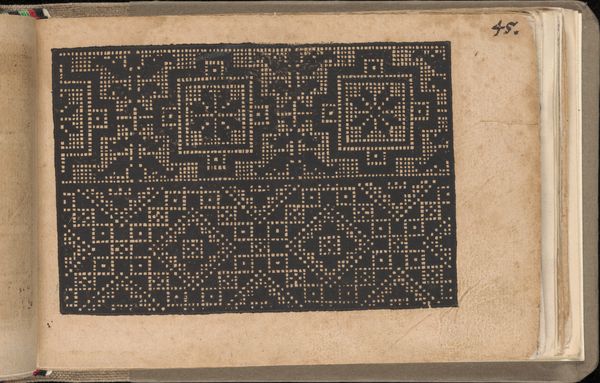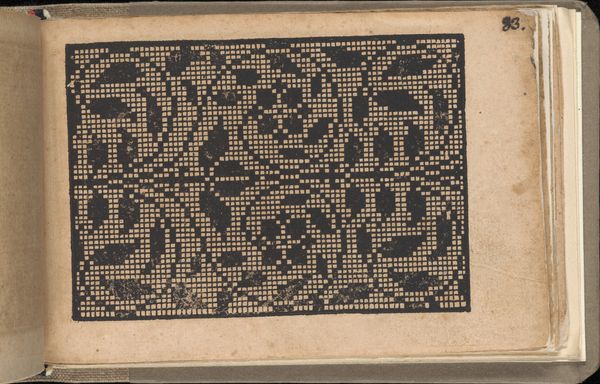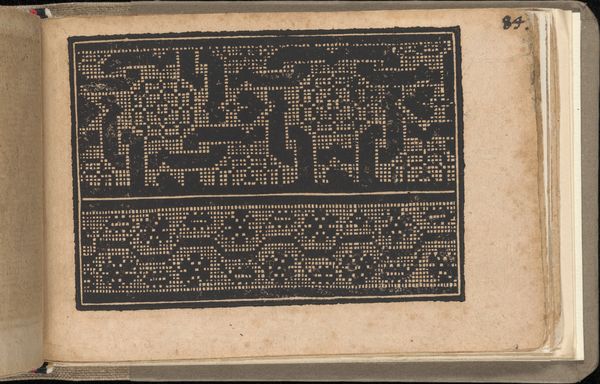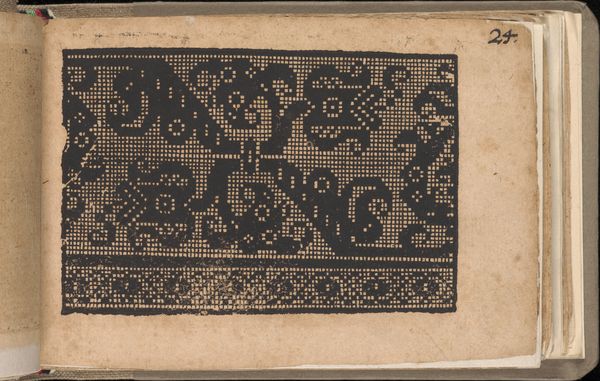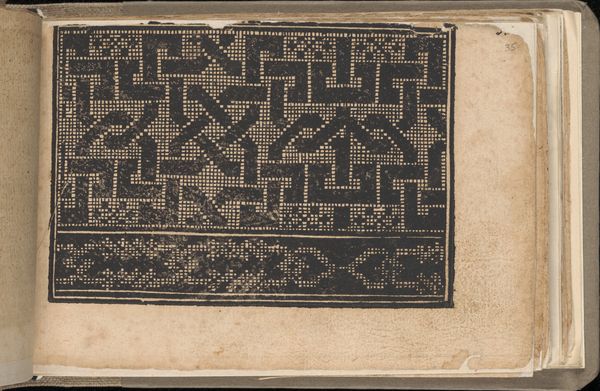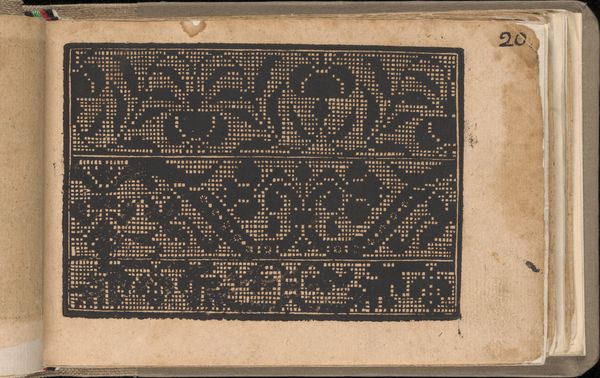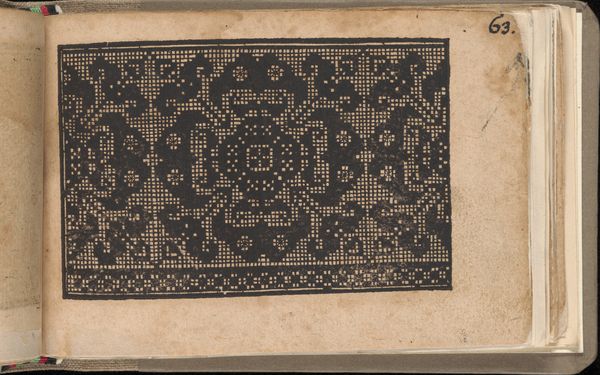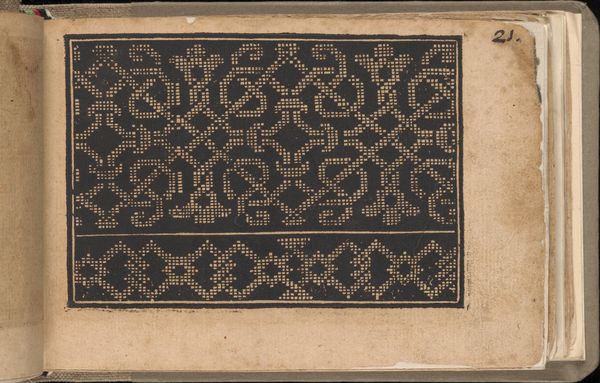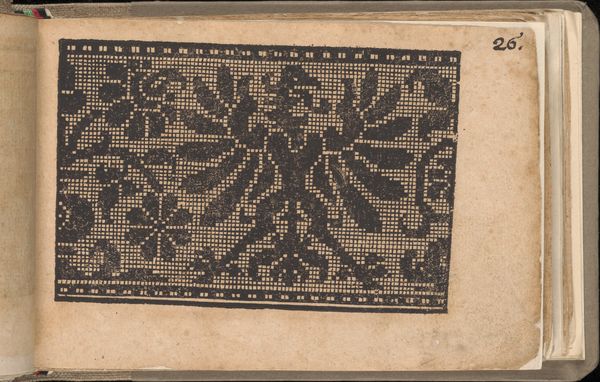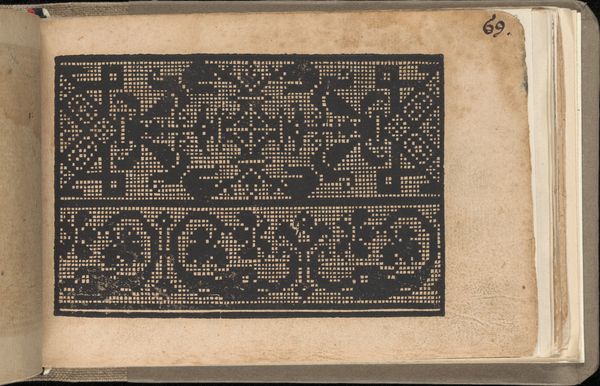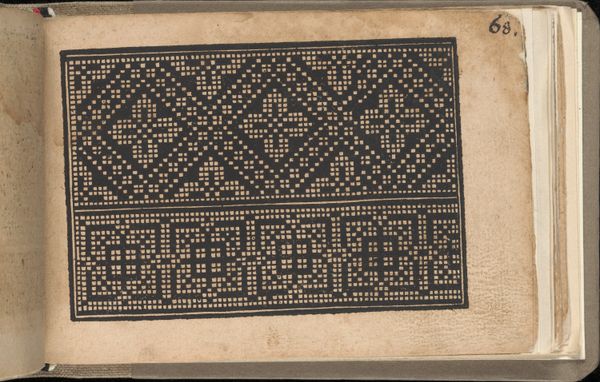
drawing, ornament, print, woodcut
#
drawing
#
ornament
# print
#
11_renaissance
#
geometric
#
woodcut
Dimensions: Overall: 4 1/2 x 6 11/16 in. (11.5 x 17 cm)
Copyright: Public Domain
Sigismundus Latomus created this page from "Schön newes Modelbuch" in the early 17th century. Printed pattern books like this one were products of a transformative moment. The rise of print culture democratized access to designs. These books empowered a growing merchant class to emulate the fashions of the elite. The geometric patterns, typical of the era, reflect an interest in mathematical precision and order. In 17th-century Europe, the burgeoning textile industry was not merely economic but a social force. Fashion became a means of expressing status, religious affiliation, and even political allegiance. Pattern books served as a bridge between artists and artisans, dictating aesthetic trends across Europe and the designs also facilitated the spread of global aesthetics as Europe expanded its international trade. Art historians can trace the circulation of these pattern books, noting how designs were adapted and reinterpreted across regions and social strata. Such research reveals the complex interplay between artistic innovation, economic forces, and social aspirations in shaping our visual world.
Comments
No comments
Be the first to comment and join the conversation on the ultimate creative platform.
